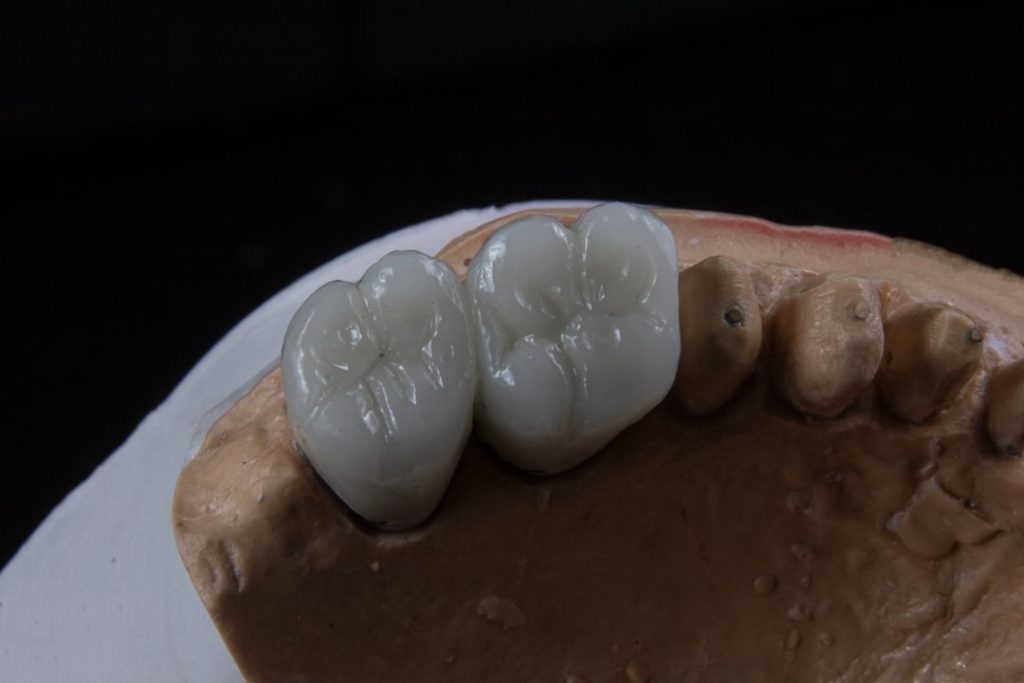Dental implant clinical trials are pivotal in advancing the field of dentistry, particularly in the realm of restorative procedures. These trials serve as a structured method for evaluating the safety, efficacy, and long-term outcomes of dental implants, which have become a cornerstone in the treatment of edentulous patients and those with compromised dentition. The significance of these trials cannot be overstated, as they provide the empirical evidence necessary to support clinical practices and inform regulatory standards.
By rigorously testing new technologies and methodologies, clinical trials help ensure that dental implants meet the evolving needs of patients while adhering to safety protocols. The landscape of dental implant clinical trials is characterized by a diverse array of studies, ranging from early-phase trials that assess initial safety to large-scale, multi-center studies that evaluate long-term outcomes. These trials often involve a multidisciplinary approach, incorporating insights from periodontics, prosthodontics, and oral surgery.
As the demand for dental implants continues to rise, driven by factors such as an aging population and increased awareness of oral health, the importance of robust clinical trials becomes even more pronounced. They not only contribute to the scientific body of knowledge but also enhance patient care by ensuring that practitioners have access to the most effective and reliable treatment options.
Key Takeaways
- Dental implant clinical trials have evolved alongside advancements in technology and materials.
- Innovations in implant materials have improved biocompatibility and durability.
- Surgical techniques have become less invasive and more precise due to technological progress.
- Digital imaging and 3D printing have revolutionized trial design and implant customization.
- Future research focuses on overcoming current challenges and exploring emerging trends for better patient outcomes.
Evolution of Dental Implant Technology
The evolution of dental implant technology has been marked by significant milestones that have transformed the way dental professionals approach tooth replacement. The journey began in the mid-20th century when pioneers like Dr. Per-Ingvar Brånemark discovered osseointegration—the process by which bone fuses with titanium implants.
This groundbreaking discovery laid the foundation for modern dental implants, leading to the development of various implant designs and surface treatments aimed at enhancing osseointegration and overall success rates. Over the decades, advancements in materials science and engineering have further refined implant technology, resulting in devices that are not only more biocompatible but also tailored to meet the specific anatomical and functional needs of patients. As technology progressed, so did the complexity of dental implants.
The introduction of different implant shapes, sizes, and surface modifications has allowed for greater customization in treatment planning. For instance, tapered implants have gained popularity for their ability to achieve primary stability in challenging bone conditions, while platform-switching techniques have been developed to minimize bone loss around implants. Additionally, the advent of computer-aided design and manufacturing (CAD/CAM) has revolutionized the fabrication of custom abutments and prosthetics, ensuring a more precise fit and improved aesthetic outcomes.
This evolution reflects a broader trend in dentistry towards personalized care, where treatment plans are increasingly tailored to individual patient needs.
Innovations in Dental Implant Materials

The materials used in dental implants play a crucial role in their success and longevity. Traditionally, titanium has been the gold standard due to its excellent biocompatibility and mechanical properties. However, recent innovations have expanded the repertoire of materials available for dental implants.
Zirconia implants have emerged as a popular alternative, particularly for patients with metal sensitivities or those seeking a more aesthetic solution. Zirconia offers a tooth-like color that can enhance the visual appeal of restorations, making it an attractive option for anterior teeth. In addition to zirconia, researchers are exploring bioactive materials that promote osseointegration and enhance healing.
For example, implants coated with hydroxyapatite—a naturally occurring mineral form of calcium apatite—have shown promise in accelerating bone integration. Furthermore, advancements in surface treatments, such as sandblasting and acid-etching, have improved the roughness and topography of implant surfaces, facilitating better bone attachment. These innovations not only aim to improve the success rates of implants but also address specific patient concerns related to aesthetics and biocompatibility.
Advancements in Surgical Techniques for Dental Implants
| Advancement | Description | Benefits | Success Rate (%) | Average Healing Time (weeks) |
|---|---|---|---|---|
| Guided Implant Surgery | Use of 3D imaging and computer-guided templates for precise implant placement. | Increased accuracy, reduced surgical time, minimized complications. | 95 | 8 |
| Immediate Implant Placement | Placement of implants immediately after tooth extraction. | Reduced treatment time, preservation of bone and soft tissue. | 90 | 6 |
| Minimally Invasive Techniques | Use of smaller incisions and flapless surgery approaches. | Less pain, faster recovery, reduced swelling. | 92 | 5 |
| Use of Biomaterials and Growth Factors | Application of bone grafts, membranes, and growth factors to enhance osseointegration. | Improved bone regeneration, higher implant stability. | 94 | 10 |
| Digital Workflow Integration | Combining digital impressions, CAD/CAM technology, and 3D printing for prosthetic fabrication. | Improved prosthetic fit, reduced chair time, enhanced patient comfort. | 96 | 7 |
Surgical techniques for placing dental implants have evolved significantly over the years, driven by a desire to improve patient outcomes and minimize complications. Traditional implant placement often involved extensive flap surgery, which could lead to increased postoperative discomfort and longer recovery times. However, minimally invasive techniques have gained traction in recent years, allowing for less tissue disruption and faster healing.
One such technique is guided implant surgery, which utilizes 3D imaging and surgical guides to ensure precise placement of implants with minimal incisions. Another notable advancement is the use of immediate loading protocols, where implants are placed and restored within a short timeframe—sometimes even on the same day as extraction. This approach not only enhances patient satisfaction by reducing treatment time but also capitalizes on the concept of immediate function, where the implant is subjected to occlusal forces shortly after placement.
However, this technique requires careful case selection and meticulous surgical execution to ensure success. The evolution of these surgical techniques reflects a broader trend towards patient-centered care in dentistry, where comfort and efficiency are prioritized alongside clinical efficacy.
Impact of Digital Imaging and 3D Printing on Dental Implant Clinical Trials
Digital imaging technologies have revolutionized the planning and execution of dental implant procedures, significantly impacting clinical trials in this field. Cone beam computed tomography (CBCT) has emerged as a critical tool for obtaining detailed three-dimensional images of a patient’s oral anatomy. This imaging modality allows clinicians to assess bone quality and quantity accurately, facilitating better treatment planning and reducing the risk of complications during surgery.
In clinical trials, CBCT data can provide valuable insights into implant placement accuracy and long-term outcomes. Moreover, 3D printing technology has introduced new possibilities for creating custom surgical guides and prosthetics tailored to individual patients. By utilizing digital scans and CAD software, clinicians can produce highly accurate guides that enhance surgical precision during implant placement.
This level of customization not only improves surgical outcomes but also contributes to more consistent results across clinical trials. The integration of digital imaging and 3D printing into dental implant research underscores a shift towards more precise and individualized approaches in dentistry.
Emerging Trends in Dental Implant Clinical Trials

As the field of dental implants continues to evolve, several emerging trends are shaping the landscape of clinical trials. One notable trend is the increasing focus on long-term follow-up studies that assess the durability and performance of implants over extended periods. While short-term success rates are essential for evaluating new technologies, understanding how implants perform over years or decades is crucial for informing clinical practice and patient expectations.
Another emerging trend is the incorporation of patient-reported outcomes (PROs) into clinical trial designs. By gathering data on patients’ perceptions of their quality of life, satisfaction with aesthetics, and functional outcomes post-implant placement, researchers can gain valuable insights into the holistic impact of dental implants on patients’ lives. This patient-centered approach aligns with broader trends in healthcare that prioritize patient experiences alongside clinical metrics.
Challenges and Opportunities in Dental Implant Clinical Trials
Despite the advancements in dental implant technology and research methodologies, several challenges persist within clinical trials. One significant challenge is recruitment; finding eligible participants who meet specific inclusion criteria can be difficult, particularly for studies involving novel materials or techniques. Additionally, variability in patient anatomy and healing responses can complicate data interpretation and lead to inconsistent results across different populations.
However, these challenges also present opportunities for innovation in trial design. For instance, adaptive trial designs allow researchers to modify protocols based on interim results or emerging data trends, enhancing efficiency and responsiveness to findings. Furthermore, leveraging digital platforms for participant recruitment and data collection can streamline processes and improve engagement among study participants.
Future Directions in Dental Implant Research
Looking ahead, future directions in dental implant research are likely to be influenced by ongoing technological advancements and evolving patient needs. One promising area is the exploration of regenerative techniques that enhance bone healing around implants. Research into stem cell therapies and growth factors may pave the way for innovative approaches that improve osseointegration rates and reduce healing times.
Additionally, as artificial intelligence (AI) continues to permeate various fields of medicine, its application in dental implant research holds great potential. AI algorithms can analyze vast datasets from clinical trials to identify patterns and predict outcomes based on individual patient characteristics. This could lead to more personalized treatment plans that optimize success rates while minimizing complications.
In summary, the future of dental implant research is poised for exciting developments that will further enhance patient care and outcomes through innovative technologies and methodologies. As researchers continue to explore new frontiers in materials science, surgical techniques, and digital technologies, the field will undoubtedly evolve to meet the growing demands of patients seeking effective solutions for tooth replacement.




